Late to the Party: The Ninja Saviors - Return of the Warriors
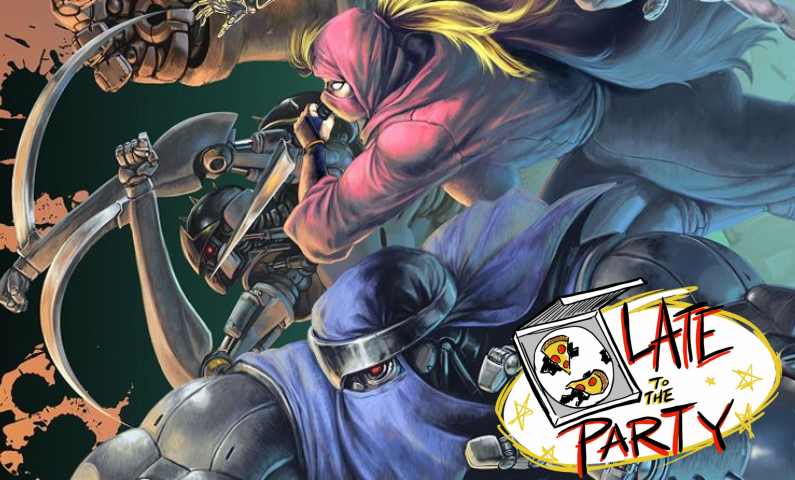
 aito was doing crazy things with multi-screened arcades games in the late 80's. Already having released the three-screen-wide Darius to arcades in 1987, they would release a double monitored brawler known as The Ninja Warriors the same year, which would get a sequel on the Super NES in 1994. It's this game that Taito and ININ Games have released to the PlayStation 4 and Nintendo Switch as The Ninja Saviors- Return of the Warriors.
aito was doing crazy things with multi-screened arcades games in the late 80's. Already having released the three-screen-wide Darius to arcades in 1987, they would release a double monitored brawler known as The Ninja Warriors the same year, which would get a sequel on the Super NES in 1994. It's this game that Taito and ININ Games have released to the PlayStation 4 and Nintendo Switch as The Ninja Saviors- Return of the Warriors.
Ninjas are cool, but cybernetic ones are even cooler, and the same team that brought us the revamped Wild Arms Reloaded definitely knows what’s up when bringing classic (and impossibly expensive) titles from the 16-bit era to the modern stage. As a side-scrolling brawler, Return of the Warriors is definitely an engaging title, one that's more involved than many of the brawlers we've played in the past. Taking place over eight lengthy stages, players into this specific game time are in for a real good time.
Nevertheless, there are a lot of brawlers out there. Capcom and SEGA are already kind of the kings of the so-called “belt-Action” genre, so how does this title separate itself from the others? Well firstly, at its core, The Ninja Saviors plays in a strictly horizontal manner, with no vertical motion – like River City Ransom or Streets of Rage – available to the player in terms of actual movement. Vertical travel is eschewed in favor of a jump or dash input instead.
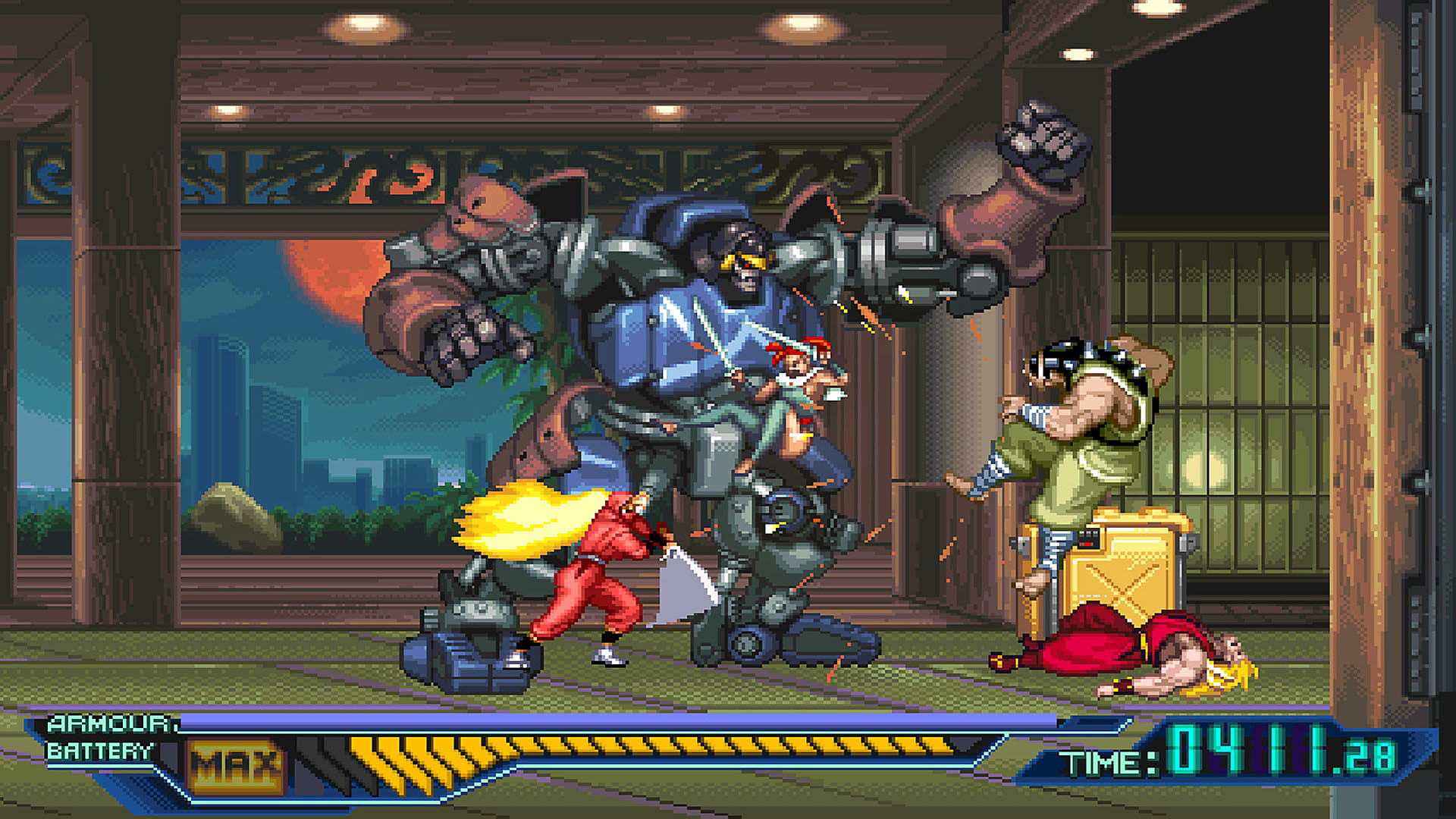
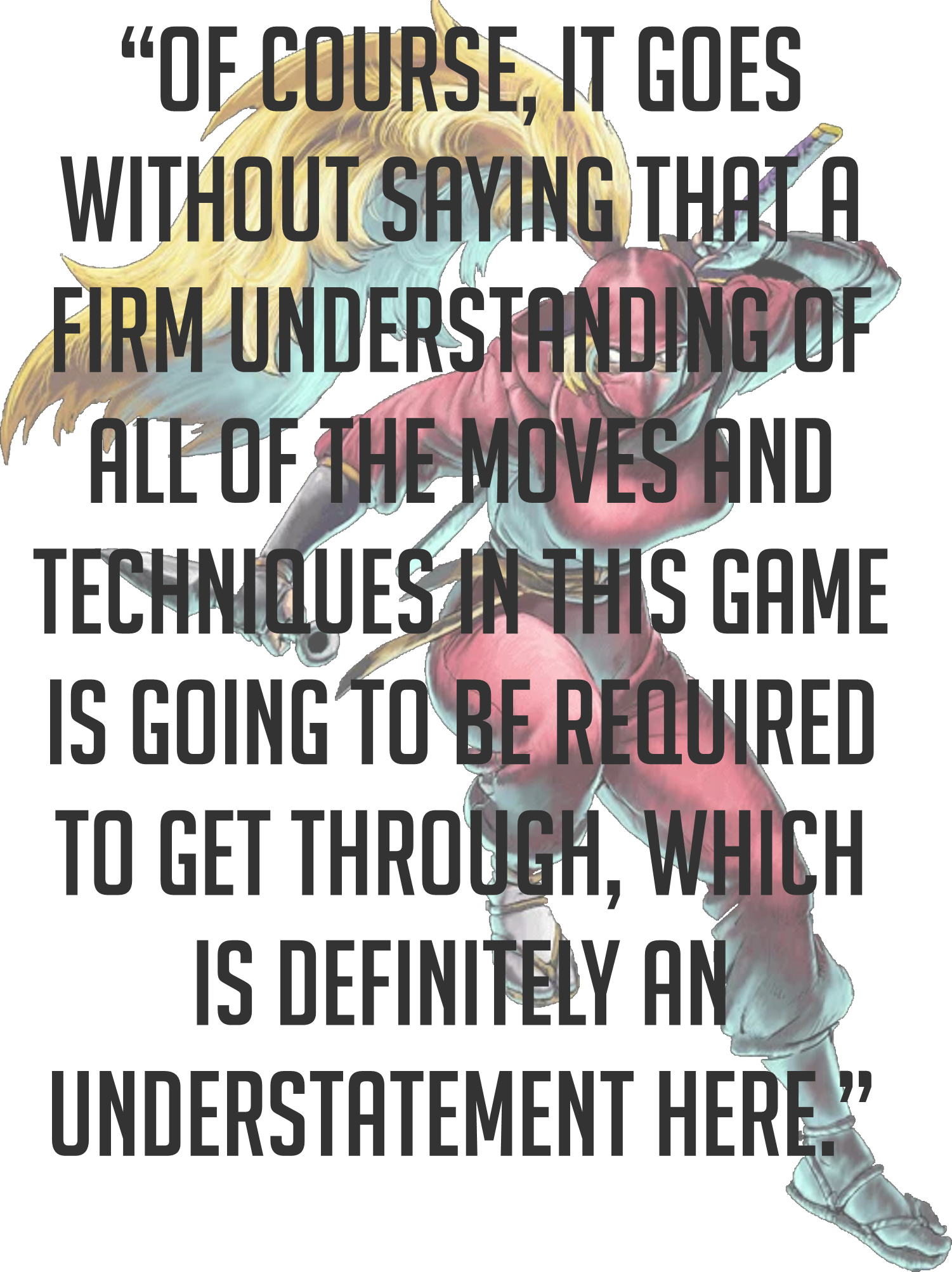 Secondly, rather than just having a button mapped to a relatively small roster of moves and actions, all sorts of different techniques can be executed by combining directionals and actions with attacks. Even rapidly attacking with a basic attack can chain into a helpful combo that can often help in reaching and taking out enemies above and behind the player while concentrating their fury on the primary target. Timing is also important with some of these techniques, as they will sometimes change based on when the next input is performed. Using the Nina, for example, allows for players to use his dash to elbow the player's foes. But if the button is pressed just a little later, the elbow becomes a powerful kick.
Secondly, rather than just having a button mapped to a relatively small roster of moves and actions, all sorts of different techniques can be executed by combining directionals and actions with attacks. Even rapidly attacking with a basic attack can chain into a helpful combo that can often help in reaching and taking out enemies above and behind the player while concentrating their fury on the primary target. Timing is also important with some of these techniques, as they will sometimes change based on when the next input is performed. Using the Nina, for example, allows for players to use his dash to elbow the player's foes. But if the button is pressed just a little later, the elbow becomes a powerful kick.
Grabs and grapples also have multiple variants depending on what additional inputs are pressed. The player can throw or spin an enemy, resulting in different damage and distance and certain throw types are required to make progress in the game at specific points. Some stage sets can also be picked up and thrown around to deal a good amount of damage to enemies as well. Many of these will break after just a couple of tosses though, so knowing where and when to use them will get players further with much more efficiency. Of course, it goes without saying that a firm understanding of all of the moves and techniques in this game is going to be required to get through, which is definitely an understatement here.
The player also has a super attack at their disposal, which allows for all enemies on the screen to be either killed off or heavily damaged when deployed. This can be unleashed when the gauge at the bottom of the screen is filled to the max. But, holding the Up-key with the Attack button will shift the super attack into a strong special attack which takes up less of the gauge, but also does less damage in a smaller area. The gauge does not need to be at max to deploy these smaller attacks.
Players will also be able to recover energy by picking up energy capsuled dropped from yellow crates. These crates need to be thrown around and used as a weapon themselves or smashed into with enemies or weaponized objects, but once the energy pickups are dropped, they can give players a much-needed boost in life.
The original three characters from the SNES version of the game reprise their roles in The Ninja Saviors, each with a vastly different play style. This should allow players with varying tastes to enjoy the game with a character that is right for them. But there are also two entirely new unlockable characters that put a nifty spin on the game as a whole as well. To put it simply, there's a good amount of content here and it plays fairly well…on second thought—almost well.
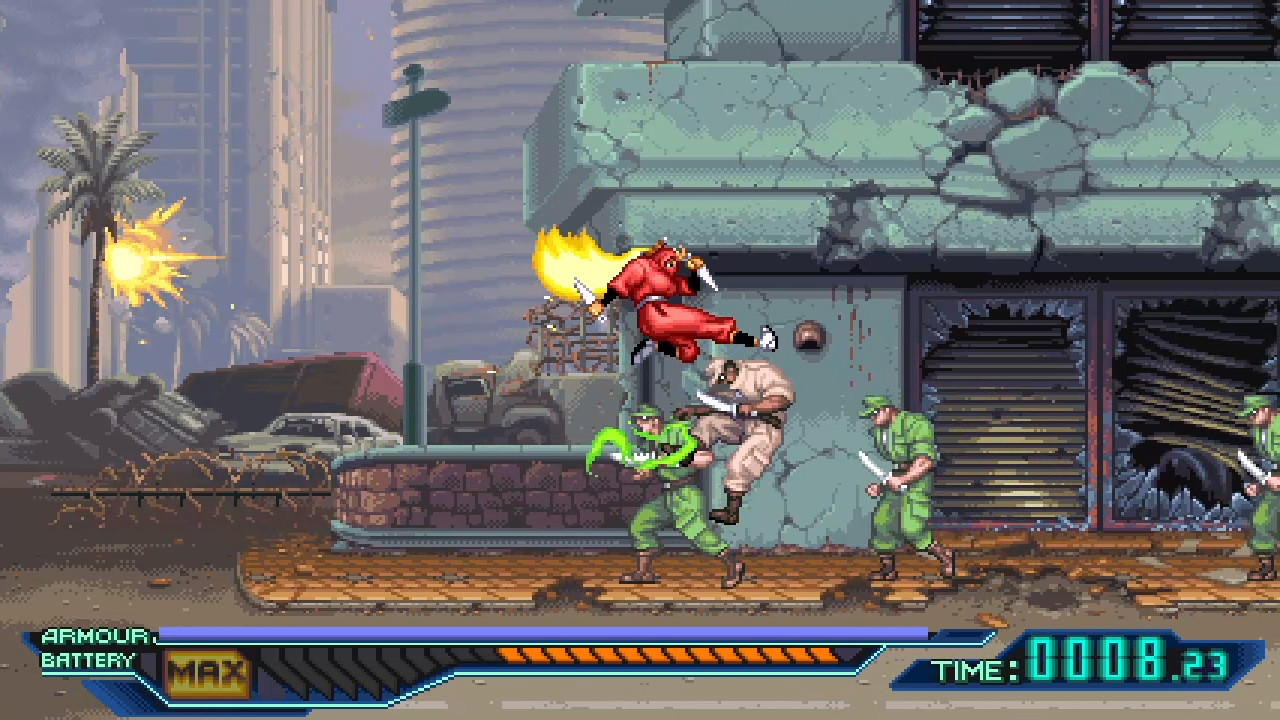
While the moves and abilities are a lot of fun to execute, there were times when the controls would just not do what we told them to do, like something as simple as grabbing an enemy, for example, had an inconsistent execution to it. It's not especially noticeable in the early stages when things are very manageable, but in later stages, specifically with stage 4 and on is where the issues started to really ramping up with the absolute cheapness in each stage thereafter. The kind of precision needed to chuck enemies into others that have very high defense just kind of flies out the window, especially when the player gets swarmed.
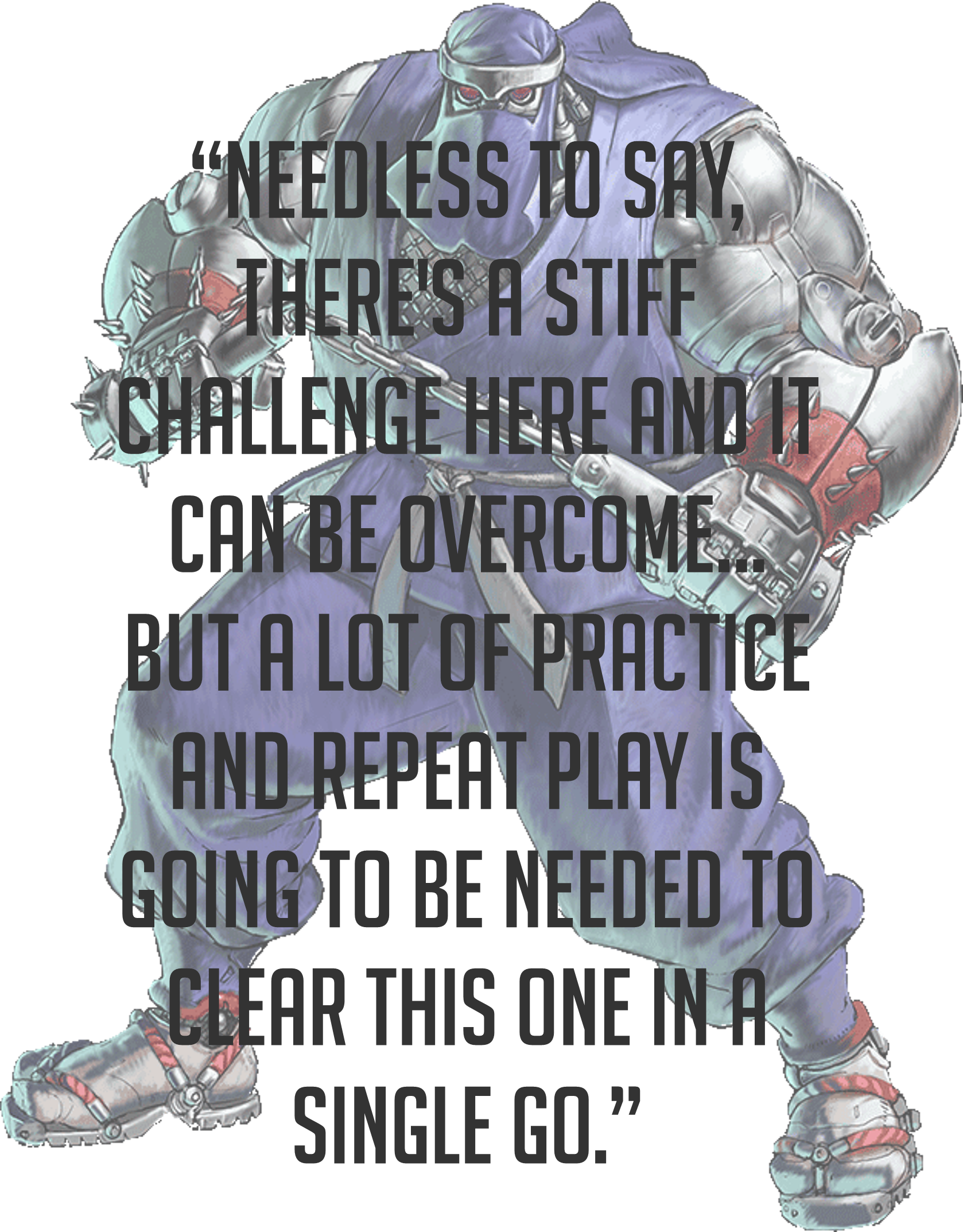 Which brings us to the difficulty; the first few stages have great flow and feel pretty accommodating. But then the difficulty spike hits in stage 4 and gets progressively more frustrating as the game invariably slogs on with cheap enemy swarms, frustrating collision detection on short enemies, and blocking mechanics that don't work very well for the relatively slow defenses and imperfect blocking zones the player has at their disposal.
Which brings us to the difficulty; the first few stages have great flow and feel pretty accommodating. But then the difficulty spike hits in stage 4 and gets progressively more frustrating as the game invariably slogs on with cheap enemy swarms, frustrating collision detection on short enemies, and blocking mechanics that don't work very well for the relatively slow defenses and imperfect blocking zones the player has at their disposal.
It basically culminates with a super, ultra-cheap final boss encounter that requires a very obtuse method to even deal any worthwhile damage, complete with repeating phases that are basically complete bullshit. This is compounded with an endless barrage of enemy clutter and what seems like an endless wait for another chance at even potentially damaging their target. Needless to say, there's a stiff challenge here and it can be overcome... but a lot of practice and repeat play is going to be needed to clear this one in a single go. Continuing wipes the timer, preventing players from ranking in.
Thankfully, this game looks and sounds fantastic, so as frustrating as it can be, at least the music is bumping. The Ninja Saviors features an awesome title sequence with an amazing parallax effect on the title graphics themselves, fantastic backgrounds, great bloom effects, smooth, enhanced animation, excellent sprites, and one of the best soundtracks this year. Perhaps best of all though, the entire thing can be played with a friend via couch-co-op multiplayer, the way it's supposed to be. Grab a buddy and wreak some havoc like it's 1994.
Basically, this is probably the best brawler you're likely to play in 2019. At CAD$29.99 on the PlayStation Store, its cost may be moderate, but its features, co-op gameplay, and overall audiovisual polish definitely make it worth its asking price.





 EdTremblay
EdTremblay





Reader Comments